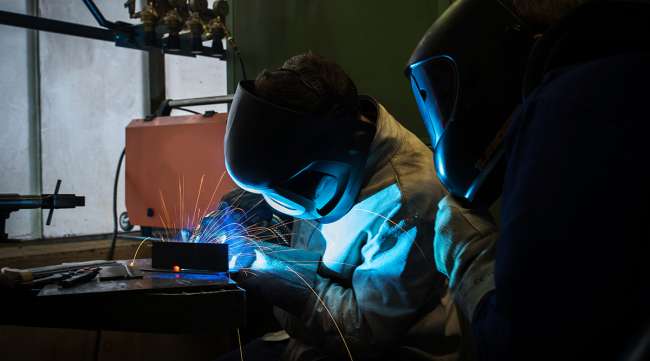American Factories Struggle to Increase Productivity

The United States has added 1.2 million jobs in manufacturing over the past eight years. Before you cheer for the revival of American manufacturing, consider the reason for all that job growth: abysmal productivity performance. Factories have had to put on more workers to fill orders because their output per hour of work is scarcely improving.
The good reason to have a job is that your employer is expanding so rapidly that it needs to hire more people, even though it is getting more production from each person. That’s not what has been happening in the United States. Instead, manufacturing output growth has been sluggish, but productivity growth has been even more sluggish. Since 2011, manufacturing productivity—that’s the value of output per hour of work—has risen just 0.7%. That’s not per year. That’s the total growth over the entire period. In contrast, productivity grew at 1% on average during every quarter in the 1990s.
RELATED: US factory managers concerned about effects of Trump’s tariffs
Michael Feroli, chief U.S. economist at JPMorgan Chase, focuses on the problem in a startling research note on the topic May 8 titled, “Stick a fork in manufacturing productivity growth.” He raises and then dismantles several comforting explanations for the poor performance.
One potential excuse for lousy reported productivity growth is that factory output has grown much more than official statistics show; thus, productivity has improved more than reported. That’s a plausible theory for such sectors as computers, in which the nature of the product is constantly changing. So Feroli focused on four sectors whose output is easily measured: wood products, fabricated metal products, basic chemicals and paper products. Productivity growth in those sectors has been “slow or nonexistent,” Feroli found.
RELATED: Trump’s China tariffs risk costing US jobs, new study shows
Is it possible that overall productivity growth was slow because high-productivity sectors moved offshore, leaving lower-productivity sectors behind? No, Feroli found. Was it that factories underinvested in machinery? Also no: “Relative to other sectors of the economy, capital spending by the factory sector has been reasonably robust.”
That leaves only one explanation: a decline in what economists call “total factory productivity”—the part of productivity that can’t be accounted for by changes in inputs of capital (i.e., machines and software) or labor (the size and quality of the workforce). Total factory productivity growth usually is positive, because factories learn by doing: They get better at producing goods with any given amount of capital and labor. But total factory productivity actually fell 5.8% in the five years ending in 2015, the most recent available data, Feroli said.
This is a dismaying result. If the numbers are to be believed, it means American factory workers on the whole forgot how to make things. They got worse at production. One implication is that it will be hard to close the big U.S. trade deficit in manufactured products because American factories are becoming less competitive.
“Even the modest growth in wages has caused U.S. manufacturing unit labor costs to soar,” he wrote, “posing a challenge to the goal of narrowing the trade deficit.”




